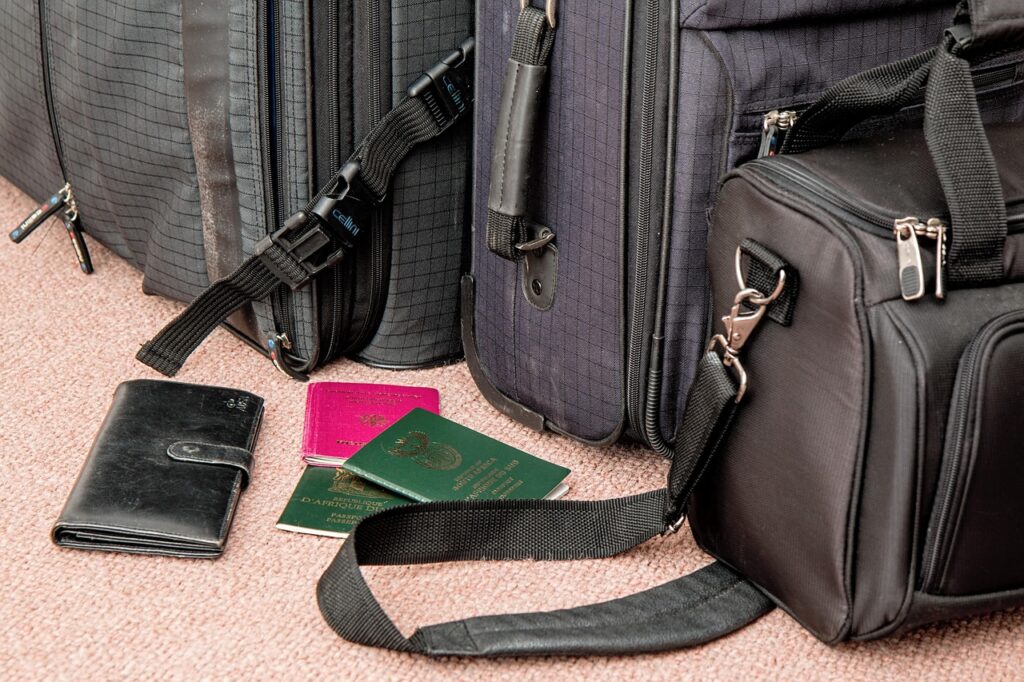Homophobia is unfortunately still ingrained in many minds. Research is being done on it in social psychology. But only for the last 50 years or so.
The word homophobia first appeared in literature in the late 1960s. At that time, Jewish-American psychologist George Weinberg published an article in which he used the term for the first time and thus coined it. He defined homophobia as a kind of disturbance in the brain, to which the sensitive person was more or less at the mercy – just like a phobia.
Term “homophobia” controversial
For this reason, however, the term “homophobia” is also controversial. A phobia is, by definition, an anxiety disorder that is usually uncontrollable – somewhat in line with Weinberg’s original definition.
However, many people with homophobic tendencies do not feel fear, but rejection, insecurity, hostility, or even disgust when confronted with homosexuality. Therefore, other terms are sometimes used for homophobia, such as homo-negativity. However, this is more widely used in English-speaking countries as “homo negativity” than ours.
Social psychology divides into three components
Homophobia can be divided into three components in a social psychological context: affective, cognitive, and behavioral homophobia. The affective component is about, for example, unpleasant feelings when two men kiss on the street, the mental expression refers to, for example, rejecting same-sex marriage or other rights for homosexual people, and the behavioral component appears when, for example, someone actively avoids contact with homosexual people.
Thus, the manifestations can vary, and there is also no evidence that people with homophobic tendencies automatically have higher levels of aggression than non-homophobic people.
Homophobia index from the 1980s.
Various instruments have evolved into measuring homophobia. One of them, widely used in research, is the “Index of Homophobia” – a test developed in 1980 that uses a consent questionnaire to ask about various situations related to dealing with homosexual people. Depending on the result, respondents are ranked on a scale between 0 and 100. The higher the number, the more pronounced the homophobia.
What are the causes of homophobia?
When it comes to homophobia, many factors apply to prejudice and discrimination in general: There is a great deal of research on why people devalue other groups. Among other things, it has something to do with internalized pigeonholing. People need to simplify and categorize their environment to understand it; our brains do it alone.
This also creates prejudices against social groups because our brain puts these groups into different pigeonholes and gives them labels – even if the reality is, of course, not as simple as our brain would like it to be.
Devaluing others to look good oneself
In addition, there is also scientific evidence that people like to see themselves in a positive light. “Especially when you see your self-worth threatened or perceive the associated group value as threatened, you devalue other groups to look good,” says social psychologist Ulrich Klocke of Humboldt University in Berlin.
Another, more general reason is that we humans tend to reject the strange and unfamiliar at first. According to Klocke, this makes evolutionary sense because humans have to be careful with things they don’t know to avoid danger.
Education and social interaction play a significant role
Another important point is social influences and the question: What do we learn through our environment? If homophobic words are used as swear words in the background, such as “gay” or “faggot,” this quickly burns itself into the brain.
Ulrich Klocke reports on experiments with students in which terms such as “gay” or “faggot” were used as insults: “When these terms are used in a negative context, the attitudes of those who heard it are subsequently more negative toward the group in question.” Incidentally, he said, this also applies to other discriminatory insults, such as racist ones.
Diminished intelligence is also a factor
A 2018 Australian analysis concludes that diminished intelligence and homonegativity are also related. Sociologist Francisco Perales of the University of Queensland looked at data from the large-scale HILDA (Household, Income and Labour Dynamics) study. This study has surveyed more than 17,000 people in Australia annually since 2001 on many aspects of their lives, such as human relationships, income, occupations, health, and education.
It also tests cognitive skills – using problem-solving and judgment tasks, as well as verbal and numerical skills. Perales used cognitive intelligence data from nearly 11,600 respondents and compared it to their responses (also from the HILDA study) to the question, “Should gay couples have the same rights as heterosexual couples?”
The result: there was a significant correlation between poor scores on cognitive tests and the opinion that there should be no equal treatment of homosexual and heterosexual couples. At the same time, Perales clarifies in the study that not all homonegative people are automatically less intelligent – it is a tendency.
Typical man, typical woman?
Gender norms also play a significant role in the issue of homophobia. The stronger a person has a clear idea of what a “real man” or a “real woman” should be, the more homophobic their attitudes often are, at least that is what several correlation studies on this topic show, especially when traditional gender roles are entrenched in a person’s value system.
Homosexual couples confuse people’s values and gender norms because often there is no clear distinction between “this is the man” and “this is the woman” in the relationship. This construct of gender norms and resulting resentment against people from the LGBTQIA* community play a more significant role for men than women.
Religiosity another factor
Religiosity is one of the other more prominent factors. “In the holy scriptures of all monotheistic religions, there are paragraphs or passages that can be interpreted as rejecting male homosexuality,” says Ulrich Klocke. In his studies, he has found that people with religiously-based homophobia were more likely to have problems with the equality of homosexual and heterosexual couples, for example, concerning marriage.
Less complex here was the expression of disgust or personal reservations about homosexual people. It is important to say, however, that not all religious people are homophobic at the same time – it also depends very much on how deeply rooted they are in their religiosity and how great the tendency toward fundamentalism is.
Are homophobic people themselves homosexual?
An old theory of Sigmund Freud that can be applied to this question is that of projection. According to Freud, projection is a defense mechanism in which one’s unwanted feelings, impulses, or desires are transferred to other people.
People who have homophobic tendencies and often express them openly are later caught in homosexual acts. Most recently, this happened to the Hungarian MEP József Szájer, a member of a national conservative party that considers homosexuality reprehensible. Yet he was caught in flagrante delicto at a gay sex party in Brussels.
Studies point to connection
Some studies point to a connection in this direction, but it has not yet been scientifically proven. In a 1996 experiment, researchers showed pornographic videos of heterosexual and homosexual love and sex scenes to two groups of heterosexual men. The groups were divided into “homophobic” and “non-homophobic” based on their scores on the Homophobia Index.
All subjects in the experiment wore some cuff around their genitals while watching the videos, which measured penile girth and how it changed. It turned out that the group of men who had been classified as “homophobic,” on the one hand, watched the homosexual video material much longer and, on the other hand, also showed physical arousal, which the “non-homophobic” group did not. However, the experimental group in this trial was relatively small overall (64 men).
Suppressed homosexuality?
Another experiment from 2012 also addressed the question of whether homophobic people themselves have a homosexual inclination. To do this, they first tested whether there was a discrepancy between the statement about actual sexual preference and the behavior in an association test. The subjects (students from Germany and the USA) were briefly shown 50 words and pictures on a screen, which they were asked to classify as quickly and intuitively as possible into the categories “gay” or “straight.”
Before each new stimulus, the terms “I” and “other” were also shown for 35 milliseconds – so briefly that the subjects could not consciously perceive them. This imprinting, even if it happened unconsciously, affects reaction speed, according to the study authors. Thus, a fast reaction associated with “me” and “gay,” compared to a slower reaction associated with “me” and “straight,” may indicate an unconscious homosexual orientation, according to the researchers. Specifically, subjects whose statements of their sexual preference diverged from the test results were also found to have high levels of aggression and rejection toward homosexual people later in the test.
This reinforces the thesis that people with homophobic tendencies are often homosexually oriented. However, the number of subjects in this study was also relatively small. Since the respondents all came from a university environment, they do not represent a cross-section of society. Again, the parents’ upbringing and the social environment from childhood play a significant role.
Indeed, another part of the experiment showed that subjects who grew up with supportive, tolerant parents were much less likely to have a discrepancy between their statement of sexual preference and the spontaneously measured response. The distinction between explicit and implicit sexual identity is essential here. Exact is what the subjects stated as their identity at the outset; implicit was the result that emerged because of the “imprinting” that was done.
Is homophobia a men’s problem?
Researcher Jennifer Bosson and her colleague, Joseph Vandello at the University of South Florida, have conducted several studies on the topic and published papers that provide a good overview of the body of studies. Their approach is as follows: in society, femininity is automatically innate through biological/physical characteristics and remains so throughout life.
This is also associated with the onset of menstruation and thus the beginning of fertility. Conversely, masculinity is a construct that is harder to attain, is not innate, and therefore must be defended repeatedly. Therefore, Bosson and Vandello also speak in their research of “precarious masculinity,” which is continually endangered and threatened.
Deviation from gender roles affects men more
Relatedly, numerous studies also show that men suffer more when they experience a deviation from their gender role. This is probably because men are still perceived as the more vigorous sex in many social constructs. Thus, when men deviate from their gender role, they generally lose status, whereas women gain from just such deviations.
Masculinity is more accessible to threaten than femininity because of its insecurity. Moreover, women do not react as significantly to an alleged threat. “Men are more sensitive, so to speak, to the fulfillment of their gender norm,” is how social psychologist Ulrich Klocke puts it.
When is the man a man …
The two American researchers, Bosson and Vandello, also tested this thesis in an experiment. The male test subjects were told, for example, that they had performed instead femininely in a particular test, or they were made to perform supposedly “feminine” tasks (such as styling dolls or painting nails). This created fear that the subjects’ masculinity was threatened, and in further, still subsequent tests, they then reacted with a kind of overcompensation to restore their masculinity.
They showed increased risk-taking behavior, considered a masculine attribute, and increasingly devalued homosexual men – to “restore” their masculinity. All these observations prove that men are more likely to have homophobic attitudes. Therefore, they are also much better researched with male subjects – although, of course, there are homophobic women as well.
How well researched is homophobia, and what is still unclear?
Homophobia was not researched more thoroughly as a phenomenon until the early 1970s. On the one hand, this has to do with the fact that the term itself only appeared in a book for the first time in the late 1960s. On the other hand, homosexuality was still listed as a mental disorder in the DSM (Diagnostic and Statistical Manual of Mental Disorders, current edition: DSM-5) until 1973. It was only when this changed that research shifted its focus to homophobia.
The causes of homophobia are extensively researched.
The causes of homophobia have been researched extensively, although there are some difficulties, as highlighted by a 2013 meta-study. One of the problems is that studies were often conducted with subjects with higher education levels – for example, university students. Since it is considered proven that prejudice occurs more frequently in milieus with a low level of education, students or people with university degrees, in particular, do not seem to be an ideal group for these tests.
In addition, the studies conducted are often based on questionnaires and self-reporting by the study participants. Some of these questionnaires also do not distinguish precisely enough between the different manifestations of homophobia (affective, cognitive, behavioral), which makes it difficult to classify them accurately. In addition, self-report questionnaires that explicitly ask about characteristics of homophobia or attitudes toward homosexual people always risk that subjects will answer in a socially desirable way and not be completely honest.
For this reason, research in sociology also uses implicit measures, but these are not yet as sophisticated as detailed questionnaires. Implicit instruments often work by unconsciously imprinting or influencing participants so that they are less likely to respond to questions in a controlled way. Still, their subconscious reveals their honest opinions and viewpoints.
Reducing prejudices
Social psychologist Ulrich Klocke would like to see more practice- and solution-oriented research that focuses on breaking down homophobia and contact between people. “There are already projects in many cities nationwide where people who feel they belong to the LGBTQIA* community go into schools and engage in conversation with students.
However, there is a lack of large-scale research on the effectiveness and impact conditions of such projects,” says the social psychologist. According to Ulrich Klocke, there is already a great deal of research based on correlations, but unfortunately, less research in this field in which specific interventions are compared in an experimental group with a control group – as is also done in evidence-based medicine.
What can be done about homophobia?
Ignorance and lack of contact are factors that promote homophobia. Therefore, it can help to connect heterosexual people with LGBTQIA* people, at best at an early age. This can either prevent prejudice from occurring in the first place or make it easier to reduce it. Positive experiences can replace homophobic thoughts.
Contacts with homosexual people help
In Ulrich Klocke’s studies, it turned out that especially people who have reservations about homosexual fellow human beings for religious reasons we’re able to change their minds through contact and subsequently show solidarity with these people. In Berlin, therefore, there have already been organized meetings between Islamic communities and people who belong to the LGBTQIA* community to stimulate precisely this exchange.
As far as the aspect of gender norms and gender identities is concerned, the equation of men and women plays a significant role in many social spheres. If explicit norms such as “this are male, that is female” no longer exist. No one can feel threatened in their masculinity either. No one has to devalue anyone in this regard to protect their gender identity.
Better educational opportunities needed
Similarly, better educational opportunities could help to reduce prejudice since homonegativity – as already mentioned – can also often be related to a lower level of education.
Finally, changes in legislation can also further contribute to reducing homophobia. Paragraph 175, for example, prohibited sexual acts between two men in Germany until 1994, making it a criminal offense. Such laws have also contributed to the fact that the rejection of homosexuality is and remains deeply rooted in many people’s minds.
- source: quarks.de/picture: pixabay.com
This post has already been read 1149 times!



